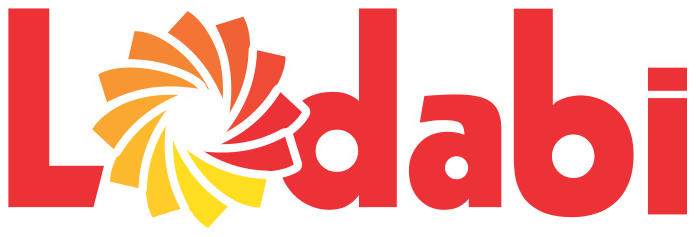If the researchers excluded the technology bubble the model worked even better. This was because it got back into the stock market too quickly after the technology bubble crash. Mainly because some limited testing I did found that a stop-loss strategy lead to lower returns even though it did reduce large losses. The order has been completed for the day , but remaining settlement calculations are still pending. The order has been rejected, and no further updates will occur for the order. This state occurs on rare occasions and may occur based on various conditions decided by the exchanges. The order has been stopped, and a trade is guaranteed for the order, usually at a stated price or better, but has not yet occurred. The order has been received by Alpaca, and routed to the exchanges, but has not yet been accepted for execution. The order has been received by Alpaca, but hasn’t yet been routed to the execution venue.
Take Profit Market orders allow traders to set targets and protect profits on positions by specifying a price at which to close an open position for profit. The calculated value of an opening buy order is the order’s limit price multiplied by the order’s quantity. In the case of market buy orders, the limit price is 2.5% to 4% above the current market price as noted above. Most traders set their stops based upon long- and medium-term support and resistance levels or a defined percentage that fits their risk tolerance. Theoretically, a stock which breaks support or resistance will fall or rise to a new levels before reversing course. For a sell stop-limit order, set the stop price at or below the current market price and set your limit price below, not equal to, your stop price.
Activation Price
Using this strategy, the stop order would follow the last traded price based on the predefined distance. And, the Trailing stop order will automatically move to lock in profit and stop loss. As with stop and stop-limit orders, different trading venues may have different standards for determining whether the price for the Trailing stop order has been reached. There are some exchanges that use only the last sale prices to trigger the order, while other platforms go with the quotation prices.
Read more about btctousd here. Before we dig deeper into trailing stops, it’s important to draw a distinction between stop loss and pending orders. Beginners to the markets often confuse these two order types as they share certain names which may sound similar to inexperienced traders. While pending orders are beyond the scope of this article, let’s just mention a few in order to distinguish them from stop loss orders. Let’s say you bought a stock at $25 per share and would like to protect it with a trailing stop. You place a trailing stop order to sell with an offset of $2 which means that the initial trailing stop value is $23.
A lot lower losses
Trailing stop orders are the stop or stop-limit orders in which the stop price is not a specific price. As the price of security moves in a favorable direction the trailing stop price will adjust or trail the market price of the crypto asset/security by the specified amount. This helps lock in any potential profit, as the stop-loss follows the trajectory of the market price as it moves in your favour, while limiting risk by capping the potential downside. Online brokers are constantly on the lookout for ways to limit investor losses. The callback rate is the percentage chance from the last highest or lowest price at which the order will close out.

As with all limit orders, a stop-limit order doesn’t get filled if the security’s price never reaches the specified limit price. A limit order is an order to buy a security at no more than a specific price, or to sell a security at no less than a specific price (called “or better” for either direction). This gives the trader control over the price at which the trade is executed; however, the order may never be executed (“filled”). Limit orders are used when the trader wishes to control price rather than certainty of execution. A stop limit order allows you to indicate a “stop price” and a “limit price”. The stop price will act as a flip-switch, and once the underlying security hits the stop price, the switch is flipped, which triggers the entry of a limit order. A stop price to sell is triggered when the security is at or dips below the stop price.
After the market order is submitted, it generally will result in an execution, but there’s no guarantee that you’ll get any specific execution price or price range. The resulting execution price may be above, at, or below the trailing stop’s trigger price itself. When an investor is long a stock, a trailing stop loss reflects a sell order. When an investor holds a short position and expects a stock to fall, a trailing stop loss reflects a buy order. In general, understanding order types can help you manage risk and execution speed. However, you can never eliminate market and investment risks entirely. It’s usually best to choose an order type based on your investment goals and objectives.
Additionally, stop orders are not supported during the pre-market and after-hours trading session . To learn about available order types for cryptocurrencies, please click here. If you are seeking an order type that can help protect your gains or prevent additional losses, stop orders can be an excellent addition to your trading repertoire. Please remember to select a Time-In-Force for your stop order. Your TIF options include placing a Day, GTC, or GTD order for equity and equity options. Selecting a TIF will maintain the stop in accordance with your TIF selection. For more information on GTC and GTD orders, please click here.
A sell stop order tells the market maker/broker to sell the stocks if the price decreases to the stop point or below, but only if the trader earns a specific price per share. For example, if the current price per share is $60, the trader can set a stop price at $55 and a limit order at $53. The order is activated when the price falls to $55, but not below $53. A stop-limit order is a tool that traders use to mitigate trade risks by specifying the highest or lowest price of stocks they are willing to accept. The trader starts by setting a stop price (order to buy or sell a stock once the price’s reached a specific point), and a limit price . You want to buy when the price reaches $125, but not if it exceeds $130.
How To Set a Trailing Stop Loss
However, its accuracy, completeness or reliability cannot be guaranteed. Michelle Jones is editor-in-chief for ValueWalk.com and a daily contributor for ValueWalkPremium.com and has been with the sites since 2012. Previously, she was a television news producer for eight years. She produced the morning news programs for the NBC affiliates in Evansville, Indiana and Huntsville, Alabama and spent a short time at the CBS affiliate in Huntsville. She lives in the Chicago area with her son, dog and two cats.
Why We Don’t Use Stop Losses Or Other Triggered Actions – Seeking Alpha
Why We Don’t Use Stop Losses Or Other Triggered Actions.
Posted: Fri, 10 Jan 2020 08:00:00 GMT [source]
Learn more about trailing stop-loss orders, along with examples of setting a trailing stop and how to use them on our Next Generation trading platform. A stop-limit order is implemented when the price of stocks reaches a specified point. Content intended for educational/informational purposes only. Not investment advice, or a recommendation of any security, strategy, or account type. Also, don’t confuse a day order with a GTC order (which doesn’t get canceled at the end of the day). You don’t want to be surprised by a “mystery position” the following day floating around in the negative return zone. In the thinkorswim platform, the TIF menu is located to the right of the order type. A one-cancels-other order is a conditional order in which two orders are placed, and one order is canceled when the other order is filled.
Learn the art of investing in 30 minutes
Good-til-cancelled orders require a specific cancelling order, which can persist indefinitely . Thanks to all authors for creating a page that has been read 342,821 times. WikiHow marks an article as reader-approved once it receives enough positive feedback. This article received 11 testimonials and 98% of readers who voted found it helpful, earning it our reader-approved status. When considering a stop order, please keep in mind that the stop order will remain on the routed exchange. Let’s say you bought two Wall Street Index CFDs at 32,420 and placed a guaranteed stop at 32,300. If triggered this would equate to a $240 loss ((32,420 – 32,300) x 2). A standard stop loss order doesn’t fully protect you from gapping or slippage, but GSLOs do.
If price hit 104, the immediately a market order takes place on the exchange and this happens within a few milliseconds. But, there can be a max 2-sec latency between the exchange price change and reflecting that price in the trailingcrypto system. This is a mirror image of a sell order and can be used to protect profits generated through short selling or when trying to buy any stock which is bouncing off a market low. A crypto asset is trading at $80.00 and you choose a 5% trigger delta. Suppose a trader is holding a long position of BTCUSD contracts at $8,000 and has set a trailing distance of $500. Once the last traded price goes up, the Trailing Stop will move up and maintain the trailing distance of $500. Every trader wants to lock their profits and protect against losses. As you can see the 15% and 20% trailing stop loss levels give you about the same overall result with the 20% stop-loss level leading to higher returns most of the time. An Immediate Or Cancel order requires all or part of the order to be executed immediately. Most market makers who receive IOC orders will attempt to fill the order on a principal basis only, and cancel any unfilled balance.
Learn how to trade forex in a fun and easy-to-understand format. If you have enjoyed this article and want to apply these risk management tools in a risk-free demo account, click here. Stop Loss is therefore https://www.beaxy.com/exchange/eth-usd/ a tool that can be used by traders to help manage their risk. Typical form users give feedback that it easy to use trailingcrypto, and usually, they say that has a very little learning curve.

An “All-or-none” buy limit order is an order to buy at the specified price if another trader is offering to sell the full amount of the order, but otherwise not display the order. Combined with price instructions, this gives market on close , market on open , limit on close , and limit on open . For example, a market-on-open order is guaranteed to get the open price, whatever that may be. A buy limit-on-open order is filled if the open price is lower, not filled if the open price is higher, and may or may not be filled if the open price is the same. A market order is an order to buy or sell the investment at the best current price available. For example, you can determine either a strict dollar amount (e.g., $10) for the trail or a percentage of the stock’s value (e.g., 5%). In either case, the “trail” is related to the value of the stock. This trail changes over time as the price of the stock changes.

With a buy trailing stop order, the stop price follows, or “trails,” the lowest price of a stock by a trail that you set. If the stock rises above its lowest price by the trail or more, it triggers a buy market order. Then, the stock will be purchased at the best price available. I utilize trailing stop loses alerts to minimize my loses and / or lock in gains. This strategies works well but an investor needs to be disciplined and follow through on selling a stock if the alert is triggered.
Stop-Loss vs. Stop-Limit Order: What’s the Difference? – Investopedia
Stop-Loss vs. Stop-Limit Order: What’s the Difference?.
Posted: Sat, 25 Mar 2017 18:48:16 GMT [source]
Instead, the stop price is either a defined percentage or dollar amount, above or below the current market price of the security (“trailing stop price”). As the price of the security moves in a favorable direction the trailing stop price adjusts or “trails” the market price of the security by the specified amount. However, if the security’s price moves in an unfavorable direction the trailing stop price remains fixed, and the order will be triggered if the security’s price reaches the trailing stop price. A trailing stop is a modified version of the stop-loss order. It allows traders to lock in profits and limit losses with a single trade by placing a percentage limit to close the trade if the price moves in an unfavorable direction. But compared to stop-loss, trailing stop is not fixed at a specific price level. Instead, it “trails” up or down automatically when the price is going in a favorable direction.
- However, its accuracy, completeness or reliability cannot be guaranteed.
- You set a trailing stop limit order with the trailing amount \$0.20 below the current market price of \$61.90.
- For sell orders that use a percentage as the trailing amount, the point distance between the security’s price and the trigger price will widen as prices move higher.
- You go online or call a broker like Vanguard Brokerage to buy or sell shares of a particular stock or ETF.
- Selecting a TIF will maintain the stop in accordance with your TIF selection.
If the market doesn’t go down at all and hits the trigger price, your order would be executed somewhere between Rs.110 and Rs.114 at the best offered price. Determine how much room you want to give the trade, such as 10 to 20 cents, and double-check your order. Your stop loss should now move automatically as the price moves. One thing to be aware of about trailing stop-loss orders is that they can get you out of a trade too soon, such as when the price is only pulling back a bit, not actually reversing. To try to prevent that scenario, trailing stops should be placed at a distance from the current price that you do not expect to be reached unless the market changes its direction. For sell orders that use a percentage as the trailing amount, the point distance between the security’s price and the trigger price will widen as prices move higher.
Which type of trading is most profitable?
The safest and most profitable form of financial market trades is trading in companies stocks. Making trades in stocks tho comes with fewer downsides.
This may sound complicated, but it’s fairly easy to understand in context. While tapping the market without active monitoring is a matter of luck, minimising risk is something always under your control. Before we explain what a Trailing Stop-limit Order is, let us first understand what a Stop-limit Order is. Trailing Stop-limit Order is a more secure version of Stop-limit Order with even lesser risk. A higher trailing delta is generally a better bet during volatile periods, while a lower trailing delta is preferable during normal market conditions. If the price instead were to drop to $19.80, the stop loss would drop to $19.90. If the price were to rise to $19.85, the stop loss would stay where it is. If the price were to fall to $19.70, the stop loss would fall to $19.80. If the price were to rise to $19.80 or higher, your order will be converted to a market order, and you would exit the trade with a gain of about 20 cents per share.

One of the two closing orders is called a take-profit order, which is a limit order, and the other is called a stop-loss order, which is either a stop or stop-limit order. Importantly, only one of the two exit orders can be executed. Once one of the exit orders is filled, the other is canceled. Please note, however, that in extremely volatile and fast market conditions, both orders may fill before the cancellation occurs. While a limit order can prevent slippage, it may not be filled for a quite a bit of time, if at all.
In the following lines, we’ll explain whether trailing stops are a good idea. This is why the placement of the trailing stop-loss is very important, and the historical performance of the stock and market conditions should be taken into consideration. It’s important to look at the volatility of the market over an extended period of time, as well as how it behaves on a daily basis. Placing the stop-loss too close to the market price may result in an early exit, whereas setting it too far away would mean risking more capital. Using forex trading as an example, a trailing stop-loss may be useful when trading a particularly volatile currency pair, which has erratic price moves. However, it’s important to remember that higher levels of volatility may result in your stop-loss being triggered early on. The scenario for a short trade is similar except that you are expecting the price to drop, so the trailing stop loss is placed above the entry price.
 COMBO 10 MÓC DÍNH TƯỜNG CHỊU LỰC 1 × ₫45.000
COMBO 10 MÓC DÍNH TƯỜNG CHỊU LỰC 1 × ₫45.000 CÂY LAU KÍNH ĐA NĂNG XOAY 360 ĐỘ 2 × ₫68.000
CÂY LAU KÍNH ĐA NĂNG XOAY 360 ĐỘ 2 × ₫68.000 HỘP ĐỰNG ĐỒ LÓT 16 NGĂN 1 × ₫95.000
HỘP ĐỰNG ĐỒ LÓT 16 NGĂN 1 × ₫95.000 CÂY LAU NHÀ TỰ VẮT 1 × ₫165.000
CÂY LAU NHÀ TỰ VẮT 1 × ₫165.000 COMBO 3 VỎ BỌC REMOTE 1 × ₫59.000
COMBO 3 VỎ BỌC REMOTE 1 × ₫59.000 DỤNG CỤ MÚC CANH LÚA MẠCH 1 × ₫15.000
DỤNG CỤ MÚC CANH LÚA MẠCH 1 × ₫15.000 COMBO 2 GIÁ ĐỠ ĐIỆN THOẠI HÌNH GẤU 1 × ₫10.000
COMBO 2 GIÁ ĐỠ ĐIỆN THOẠI HÌNH GẤU 1 × ₫10.000 COMBO 10 MÓC DÁN TƯỜNG 3D CHỊU LỰC 1 × ₫59.000
COMBO 10 MÓC DÁN TƯỜNG 3D CHỊU LỰC 1 × ₫59.000
